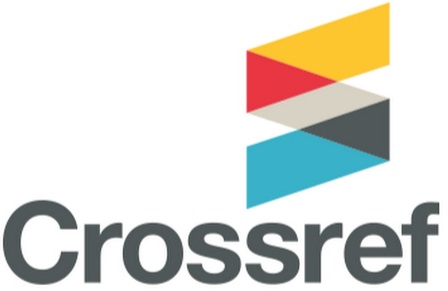Understanding Gen Z's Netflix usage in Indonesia: an Extended TAM perspective on willingness to subscribe
(1) Universitas Bengkulu
(2) Universitas Bengkulu
(*) Corresponding Author
Abstract
This research constitutes an innovative contribution by exploring Generation Z's inclination to subscribe to Netflix. As this demographic dominates streaming platforms, understanding factors influencing subscription willingness is crucial in the digital entertainment industry. The study analyzes variables such as Perceived Usefulness, Perceived Ease of Use, Content Richness, Interactivity, and Perceived Price from the perspective of Generation Z in Indonesia. Utilizing the Structural Model with Partial Least Squares (PLS), online questionnaires were distributed through social media, garnering 300 responses. Findings reveal that Perceived Price, Perceived Usefulness, and Perceived Ease of Use significantly influence the Willingness to subscribe to Netflix among Generation Z in Indonesia. Interactivity positively impacts Perceived Usefulness, while Content Richness lacks a significant influence. These results underscore the importance for streaming providers like Netflix to ensure perceived value in pricing, prioritize user-friendliness, and leverage interactive features for an enhanced subscription experience. Aligning content with user preferences remains crucial for a nuanced understanding of the content-user relationship within the digital landscape.
Keywords
Full Text:
PDFReferences
Adamczyk, D., Jaworska, D., Affeltowicz, D., & Maison, D. (2022). Plant-based dairy alternatives: consumers’ perceptions, motivations, and barriers—results from a qualitative study in Poland, Germany, and France. Nutrients, 14(10), 2171.
Agarwal, P., Swami, S., & Malhotra, S. K. (2022). Artificial intelligence adoption in the post COVID-19 new-normal and role of smart technologies in transforming business: a review. Journal of Science and Technology Policy Management.
Ahn, S. J., & Lee, S. H. (2019). The effect of consumers’ perceived value on acceptance of an internet-only bank service. Sustainability, 11(17), 4599.
Al-Zahrani, F. A. (2020). Subscription-based data-sharing model using blockchain and data as a service. Ieee Access, 8, 115966-115981.
Auditya, A., & Hidayat, Z. (2021). Netflix in Indonesia: Influential Factors on Customer Engagement among Millennials' Subscribers. Journal of Distribution Science, 19(1), 89-103.
Bacile, T. J. (2020). Digital customer service and customer-to-customer interactions: investigating the effect of online incivility on customer perceived service climate. Journal of Service Management, 31(3), 441-464.
Basuki, R., Tarigan, Z. J. H., Siagian, H., Limanta, L. S., Setiawan, D., & Mochtar, J. (2022). The effects of perceived ease of use, usefulness, enjoyment and intention to use online platforms on behavioral intention in online movie watching during the pandemic era (Doctoral dissertation, Petra Christian University).
Camilleri, M. A., & Falzon, L. (2021). Understanding motivations to use online streaming services: integrating the technology acceptance model (TAM) and the uses and gratifications theory (UGT). Spanish Journal of Marketing-ESIC, 25(2), 217-238.
Cebeci, U., Ince, O., & Turkcan, H. (2019). Understanding the intention to use Netflix: An extended technology acceptance model approach. International Review of Management and Marketing, 9(6), 152-157.
Chin, W. W. (1998). The partial least squares approach to structural equation modeling. Modern methods for business research, 295(2), 295-336.
Davis, F. D. (1989). Perceived usefulness, perceived ease of use, and user acceptance of information technology. MIS quarterly, 319-340.
Dwivedi, Y. K., Hughes, L., Ismagilova, E., Aarts, G., Coombs, C., Crick, T., ... & Williams, M. D. (2021). Artificial Intelligence (AI): Multidisciplinary perspectives on emerging challenges, opportunities, and agenda for research, practice and policy. International Journal of Information Management, 57, 101994.
Eka, H. (2020). IMPLEMENTATION OF INVESMENT BASE SOCIAL COMITMENT (IBASOC) IN AN EFFORT TO STRENGTHENGREEN MANAGEMENT TO IMPROVE THE COMPANY'S REPUTATION IN INDONESIA.
Etminani-Ghasrodashti, R., Ketankumar Patel, R., Kermanshachi, S., Rosenberger, J. M., & Foss, A. (2022). Modeling users’ adoption of shared autonomous vehicles employing actual ridership experiences. Transportation Research Record, 2676(11), 462-478.
Fletcher, R., & Nielsen, R. K. (2020). Are Netflix and Spotify subscribers more likely to pay for online news? Comparative analysis of data from six countries. International Journal of Communication, 14.
Fornell, C., & Bookstein, F. L. (1982). Two structural equation models: LISREL and PLS applied to consumer exit-voice theory. Journal of Marketing research, 19(4), 440-452.
Gefen, D., & Ridings, C. M. (2003). IT acceptance: managing user—IT group boundaries. ACM SIGMIS Database: the DATABASE for Advances in Information Systems, 34(3), 25-40.
Gefen, D., Straub, D., & Boudreau, M. C. (2000). Structural equation modeling and regression: Guidelines for research practice. Communications of the association for information systems, 4(1), 7.
Gunawan, P. (2022). PENGARUH CONTENT RICHNESS, PERCEIVED USEFULNESS DAN PERCEIVED PRICE TERHADAP WILLINGNESS TO SUBSCRIBE PADA LAYANAN PLATFORM STREAMING WETV DI INDONESIA. Agora, 10(2).
Gupta, G., & Singharia, K. (2021). Consumption of OTT media streaming in COVID-19 lockdown: Insights from PLS analysis. Vision, 25(1), 36-46.
Harini, A., Marcello, V. D., Putra, M. R. J., Prabowo, A. A., Mani, L., & Hidayat, Z. (2022). The Influence of Content Richness, Perceived Ease of Use, and Perceived Usefulness on the Use of Iflix Application in Indonesia. Budapest International Research and Critics Institute-Journal (BIRCI-Journal), 5(4), 31590-31604.
Hasan, V. A. (2017). Analisis Faktor-Faktor Yang Mempengaruhi Willingness To Subscribe: Telaah Pada Layanan Video On Demand Netflix. Ultima Management: Jurnal Ilmu Manajemen, 9(1), 22-38.
Javaid, M., Haleem, A., Singh, R. P., & Suman, R. (2022). Artificial intelligence applications for industry 4.0: A literature-based study. Journal of Industrial Integration and Management, 7(01), 83-111.
Kang, S. U., Park, S., & Lee, S. (2014). Factors influencing new media subscription based on multigroup analysis of IPTV and DCTV. ETRI Journal, 36(6), 1041-1050.
Lee, D. Y., & Lehto, M. R. (2013). User acceptance of YouTube for procedural learning: An extension of the Technology Acceptance Model. Computers & Education, 61, 193-208.
Lengyel, D. (2021). Does the Netflix Recommender System Produce Customer Utility?: An Analysis of the Technology Acceptance of the Algorithmic-prediction-based Netflix Recommender System and its Drivers (Doctoral dissertation, Universidade Catolica Portugesa (Portugal).
Leong, L. Y., Ooi, K. B., Chong, A. Y. L., & Lin, B. (2011). Influence of individual characteristics, perceived usefulness and ease of use on mobile entertainment adoption. International Journal of Mobile Communications, 9(4), 359-382.
Lestari, E., & Soesanto, O. R. C. (2020). Predicting factors that influence attitude to use and its implications on continuance intention to use SVOD: Study on Netflix users of Indonesia. DeReMa (Development Research of Management): Jurnal Manajemen, 15(2), 183-208.
Lestari, E., & Soesanto, O. R. C. (2020). Predicting factors that influence attitude to use and its implications on continuance intention to use SVOD: Study on Netflix users of Indonesia. DeReMa (Development Research of Management): Jurnal Manajemen, 15(2), 183-208.
Lin, T. C., Wu, S., Hsu, J. S. C., & Chou, Y. C. (2012). The integration of value-based adoption and expectation–confirmation models: An example of IPTV continuance intention. Decision Support Systems, 54(1), 63-75.
Liu, Y., & Shrum, L. J. (2002). What is interactivity and is it always such a good thing? Implications of definition, person, and situation for the influence of interactivity on advertising effectiveness. Journal of advertising, 31(4), 53-64.
Lu, Y., & Siegfried, P. (2021). E-commerce Live streaming–An Emerging Industry in China and A Potential Future Trend in the World. ACC Journal.
Ma, L., & Sun, B. (2020). Machine learning and AI in marketing–Connecting computing power to human insights. International Journal of Research in Marketing, 37(3), 481-504.
Mäntymäki, M., Islam, A. N., & Benbasat, I. (2020). What drives subscribing to premium in freemium services? A consumer value‐based view of differences between upgrading to and staying with premium. Information Systems Journal, 30(2), 295-333.
Mäntymäki, M., Islam, A. N., & Benbasat, I. (2020). What drives subscribing to premium in freemium services? A consumer value‐based view of differences between upgrading to and staying with premium. Information Systems Journal, 30(2), 295-333.
Marakas, G., Johnson, R., & Clay, P. F. (2007). The evolving nature of the computer self-efficacy construct: An empirical investigation of measurement construction, validity, reliability and stability over time. journal of the Association for Information Systems, 8(1), 2.
Mulla, T. (2022). Assessing the factors influencing the adoption of over-the-top streaming platforms: A literature review from 2007 to 2021. Telematics and Informatics, 69, 101797.
Nagaraj, S., Singh, S., & Yasa, V. R. (2021). Factors affecting consumers’ willingness to subscribe to over-the-top (OTT) video streaming services in India. Technology in Society, 65, 101534.
Naik, N. V. (2020, May). An introduction to over-the-top entertainment. India—a perfect playground for this digital industry. In Meeting of Research in Music, Arts and Design (pp. 229-242). Cham: Springer International Publishing.
Niko, J., & Margaret, P. B. (2022). Faktor-faktor yang mempengaruhi perceived value dan implikasinya kepada intention to subscribe serta pengaruhnya terhadap social influence pada aplikasi streaming film Disney Plus Hotstar. Jurnal Manajemen Pemasaran, 16(2), 77-86.
Park, S., Kang, S. U., & Zo, H. (2016). Analysis of influencing factors on the IPTV subscription: Focused on the moderation role of user perceived video quality. Information Technology & People, 29(2), 419-443.
Pritania, A., & Mulia, D. Flexibility, Content and Perceived Ease of Use Towards SVOD Subscription Intention Mediated by Perceived Price.
Puntoni, S., Reczek, R. W., Giesler, M., & Botti, S. (2021). Consumers and artificial intelligence: An experiential perspective. Journal of Marketing, 85(1), 131-151.
Singh, N., & Sinha, N. (2020). How perceived trust mediates merchant's intention to use a mobile wallet technology. Journal of Retailing and Consumer Services, 52, 101894.
Soldo, L., & Schagerl, C. (2023). Impact of the covId-19 pandemIc on netflIx. MAP Education and Humanities, 3(1), 75-82.
Song, M. (2021). A comparative study on over-the-tops, netflix & Amazon prime video: based on the success factors of innovation. International journal of advanced smart convergence, 10(1), 62-74.
Tavitiyaman, P., Zhang, X., & Tsang, W. Y. (2022). How tourists perceive the usefulness of technology adoption in hotels: Interaction effect of past experience and education level. Journal of China Tourism Research, 18(1), 64-87.
Teo, H. H., Oh, L. B., Liu, C., & Wei, K. K. (2003). An empirical study of the effects of interactivity on web user attitude. International journal of human-computer studies, 58(3), 281-305.
Tibrewal, A., Sehgal, R., & Singh, S. (2021). ANTECEDENTS OF RECOMMENDATION FRAMEWORK ENABLED THROUGH ARTIFICIAL INTELLIGENCE ON NETFLIX PLATFORM. Journal of General Management Research, 8(1).
Venkatesh, V., & Davis, F. D. (2000). A theoretical extension of the technology acceptance model: Four longitudinal field studies. Management science, 46(2), 186-204.
Venkatesh, V., & Davis, F. D. (2000). A theoretical extension of the technology acceptance model: Four longitudinal field studies. Management science, 46(2), 186-204.
Verganti, R., Vendraminelli, L., & Iansiti, M. (2020). Innovation and design in the age of artificial intelligence. Journal of Product Innovation Management, 37(3), 212-227.
Wu, G., & Wu, G. (2006). Conceptualizing and measuring the perceived interactivity of websites. Journal of Current Issues & Research in Advertising, 28(1), 87-104.
Yaacob, Z., & Md Saad, N. H. (2020). Acceptance of Youtube as a learning platform during the covid-19 pandemic: The moderating effect of subscription status. Tem Journal, 9(4).
Yeşil, M. M. (2020). Media, sports and entertainment industry in the post-pandemic period. Reflections on the Pandemic, 959.
Zis, S. F., Effendi, N., & Roem, E. R. (2021). Perubahan perilaku komunikasi generasi milenial dan generasi z di era digital. Satwika: Kajian Ilmu Budaya Dan Perubahan Sosial, 5(1), 69-87.
DOI: https://doi.org/10.24123/mabis.v23i1.738
Article Metrics
Abstract view : 1206 timesPDF - 341 times
Refbacks
- There are currently no refbacks.
Copyright (c) 2024 Andea Ndari Marela, Lizar Alfansi

This work is licensed under a Creative Commons Attribution 4.0 International License.
This work is licensed under a Creative Commons Attribution 4.0 International License. ISSN: 1412-3789. e-ISSN: 2477-1783.
 |  |  |  |
 |  |  |  |



